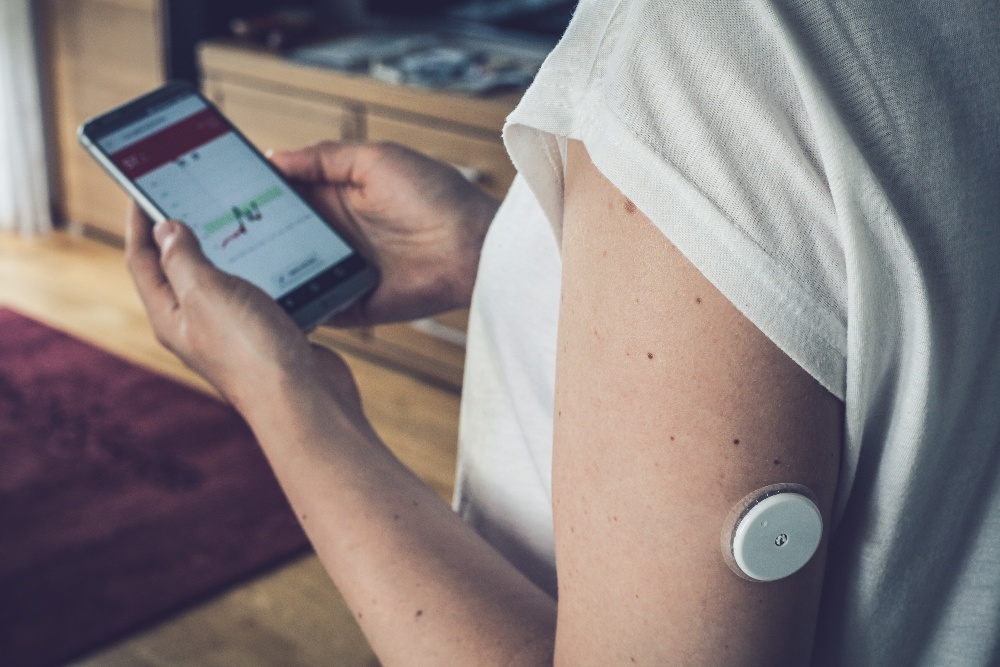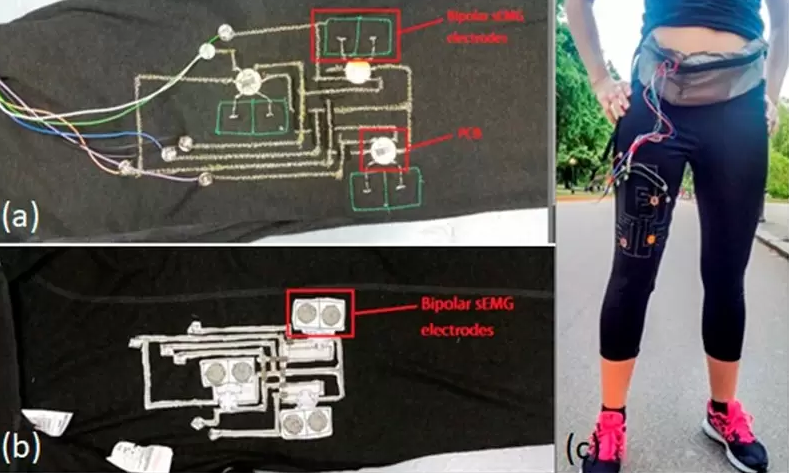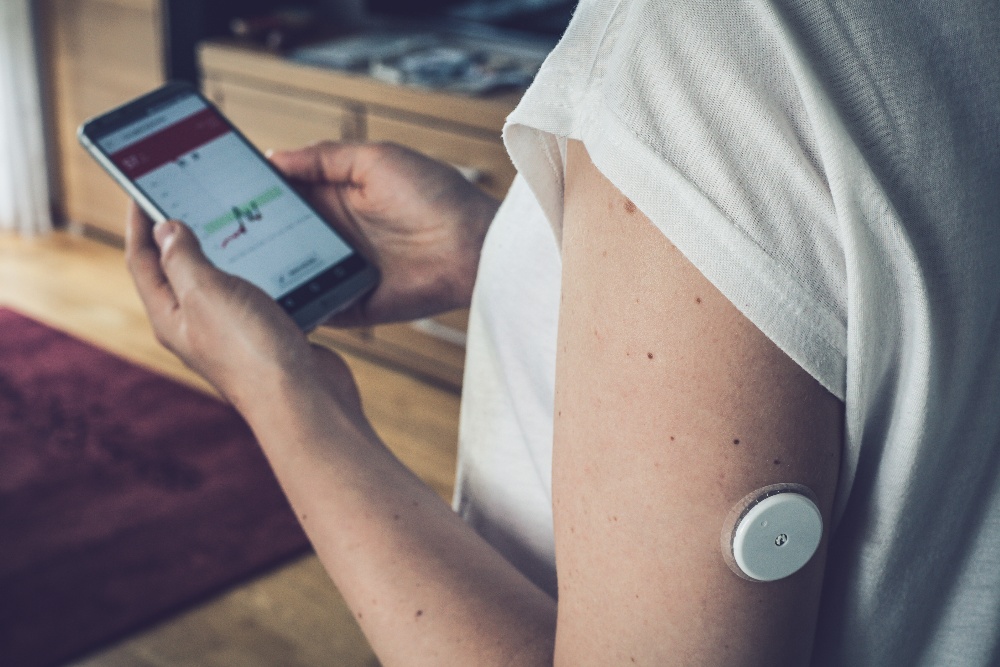Wearable devices article hits the press | Voler Systems
Our latest wearable devices article hits the press! Our Wearable World article “...

Wearables are one of the fastest-growing segments in tech. What was once a niche category is now a thriving market that continually evolves. Consumer wearables are seeing a huge boom, and the future is looking brighter than ever. But it's not just trendy gadgets from familiar brands shaping technology.
Thanks to advances in sensor technology, wireless communications, and low-power electronics, wearables are making big waves in healthcare, manufacturing, logistics, and more. These devices are life-changing and will continue to shape our future moving forward.
No matter what kind of device you're designing, its capabilities start with sensors. The sensors you implement dictate what types of information the gadget gathers and what you can do with it. Wearables have come a long way since old-school watch calculators. Today, you can utilize sensors to capture detailed data that gives you better insight into the wearer's health, activity, and lifestyle.
Here's a breakdown of commonly used sensors in modern wearables.
Some of the earliest wearables utilized motion-based sensors to pick up user movements. The technology behind the sensors has improved tremendously, allowing manufacturers to replace mechanical devices with low-cost sensors.
Two of the most commonly used sensors are gyroscopes and accelerometers. The former measures angular velocity, and MEMS gyroscopes collect accurate data on a small scale. Meanwhile, accelerometers measure acceleration forces using piezoelectric technology. Both sensors are popular in fitness devices, pedometers, and even sleep trackers. Low-cost chips now combine a 3-axis accelerometer and 3-axis gyroscope in one chip.
Another promising aspect of wearable tech involves the analysis of physiological data. This type of technology is nothing new to healthcare. Wearables have done a lot to shape medicine and patient care in the last decade. However, things are still evolving.
Not only are sensors getting more accurate, but the technology is starting to appear in mass-marketed consumer devices as well. Big-name brands introduced features that monitor the user's heart rate, respiration, blood oxygen levels, and more.
Recent FDA clearance for newer devices paved the way for consumer-level ECG readings and monitoring for heart conditions like Atrial Fibrillation.
Some healthcare professionals even used wearables to identify COVID symptoms during the pandemic.
The future is bright for sensors that focus on gathering physiological data. Technology is improving rapidly, making it easier for the average person to harness the information they need to improve their overall health. Potential uses are vast, including everything from hospital monitoring and sleep tracking to diabetes management and cardiovascular health tracking.
The human body is dynamic, providing a wealth of information that we can use to monitor health, detect illness, improve lifestyles, and more. Sensors are the front lines of physiological data collection, giving us more insight into a person's health than ever before. Here are some of the most commonly used physiological markers that sensors measure.
Body temperature is a base-level measurement that physicians frequently use to make healthcare decisions. The problem with most wearable devices is that they cannot provide accurate core temperature readings. The best location to get core temperature is the underarm or forehead. Hearables worn in the ear provide accurate core body temperature. However, wrist-based wearables can only measure skin temperature on the arm. Plus, they have issues with reliable skin contact.
Luckily, the implementation of multiple sensors can often overcome that issue. Good software and advanced algorithms can achieve sensor fusion to determine if skin temperature is close to core body temperature.
The software can test ambient temperature, use data from motion sensors to detect a patient's movement, and measure galvanic skin response to monitor sweat on the skin. Those sensors work together to achieve more accurate core body temperature readings.

We've already talked about basic gyroscopes and accelerometers. However, modern low-power motion sensors can do more than track step counts.
When software interprets the data, motion sensors can take multi-axis measurements. That way, it can measure gait to detect potential illnesses, detect sleep patterns, detect falls, and more.
Sensors that track your position serve many purposes. With the right software and processors, they can provide detailed location information. The sensors can also gauge your proximity to nearby objects, map out your surroundings, and more.
Device makers can take advantage of several sensors to get more insight into the wearer's body position and location. For example, the technology is helpful for dead-reckoning. A combination of GPS and motion sensors provide accurate tracking while managing power consumption. Altimeters, which measure barometric pressure, assist with vertical position measurement, too.
Heart rate is another crucial physiological measurement. Electrocardiograms (ECG) record the heart's electrical signals. In the past, 12 electrodes were necessary. However, effective signal processing makes it possible for modern sensors to use only two and get equivalent accuracy.
A pulse plethysmograph (PPG) can measure heart rate. It sends two IR wavelengths through or into the body and works well on most parts of the body.
The standard way to measure oxygen saturation through the blood is with a pulse plethysmograph sensor. PPG sensors were originally designed to measure blood oxygen, but they also pick up the heart rate.
A standard transmissive PPG passes two IR wavelengths through thin areas with good blood perfusions, such as the ear or finger. It's the more accurate method because it receives a strong signal. Reflective PPG sensors are suitable for different body parts, but they are somewhat more challenging to use because the reflected light signal is smaller than the transmitted light signal.

Biopotentials are electrical signals produced by the physiological processes in the body. Sensors measure them as ECG, EEG, and EMG signals.
As mentioned earlier, ECG only needs two electrodes, thanks to efficient signal processing. But even still, up to 12 can provide better accuracy. ECG leads must be at least one and a half inches apart to get a strong signal, requiring larger wearables. Wet contacts are also easier to use, but dry electrodes are more convenient.
An electroencephalogram (EEG) measures biopotentials from the brain between points on the scalp. EEG monitoring has been changing. New devices are getting useful information without a large number of leads placed all over the head and requiring shaving of hair.
Finally, there's an electromyogram (EMG). An EMG measures biopotential from muscle. This measurement is instrumental in treating stroke patients because it shows what muscles the brain directs to move. An issue is that EMG electrodes require accurate placement down to a couple of millimeters in places such as the arm. Otherwise, it could measure the wrong muscle.
There are many ways to measure the number of breaths a person takes per minute. The traditional method is to use a chest strap, which involves detecting changes in the strap length as the chest expands. Unfortunately, this route isn't convenient for most wearables. The same goes for measurements using a nasal cannula.
A thoracic impedance sensor is more viable for wearables. It makes an electrical measurement of impedance. However, results aren't reliable on the wrist, delegating the sensor to the chest.
Respiration rate can be derived from an ECG signal, but the data must go through processing to filter out the heart rate, and it’s not yet accurate enough for medical use.
In the past, the only accurate way to measure systolic and diastolic blood pressure was to use a pressure cuff on the arm. However, researchers are investigating three new methods to make it more suitable for wearables.
These include PPG with advanced software, Pulse Transit Time measurements on the wrist, and ECG signals with advanced neural network software. These methods are still in the early stages, but they show promise. At least one company has achieved medically accurate results using a PPG sensor, so blood pressure will soon become a commonly measured parameter in wearable devices.

Blood glucose measurements are crucial for those who have diabetes. Right now, the most common way to measure glucose levels is to prick the finger and put a blood sample in a sensor.
However, continuous glucose monitors (CGM) are changing all that. This wearable technology involves a small needle that enters the skin in an area with good blood perfusion. Implantable CGMs are available, too. Either way, they continuously monitor glucose levels and send the data to a remote device for straightforward data interpretation.
These sensors are growing rapidly in use, as they reduce the need to sample blood by pricking a finger. They only work in certain locations, however. For example, they are not accurate on the wrist. They have opened up a new use. Users have created closed-loop pancreas replacements by integrating these monitors with insulin pumps. Now a company got FDA approval for the combination of a CGM and insulin pump.
When it comes to designing wearable gadgets, the applications are limited only by imagination. Sensor technology is constantly improving, leading to more accurate and capable devices. These components are smaller than ever, allowing you to implement a bevy of sensors that serve your product well.
Whether your priority lies with healthcare or the consumer market, a suitable array of sensors can revolutionize your device and ensure success.
If you’re looking to bring a wearable to market, let Voler Systems be your partner in design. We have decades of experience working with complex sensors, IoT devices, and wearables. Our team understands how vital sensor implementation is to the overall functionality of your device.
Contact us today to discuss your design. Thanks to our expertise in this field, we can make your product idea a reality.
